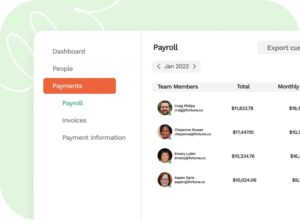Compare the key features of EDR software Palo Alto Networks Traps and Fortinet’s FortiEDR.

What is Palo Alto?
Palo Alto Networks Traps is an endpoint protection solution that utilizes effective endpoint protection technology alongside endpoint detection and response capabilities as a unified agent. It empowers security teams to automatically protect, discover and respond to attacks. Palo Alto employs AI and machine learning techniques to handle unknown, known or sophisticated attacks.
What is Fortinet?
FortiEDR is Fortinet’s EDR solution that offers real-time automated pre- and post-infection endpoint protection. With orchestrated incident response across many communication devices like servers with legacy and current operating systems, and operational technology and manufacturing systems, Fortinet proves to be a comprehensive endpoint security platform. It proactively lessens the attack surface, prevents malware infections and handles potential threats in real-time.
SEE: Feature comparison: Time tracking software and systems (TechRepublic Premium)
Fortinet vs Palo Alto: Feature comparison
| Feature | Fortinet | Palo Alto |
|---|---|---|
| Real-time prevention | Yes | No |
| Zero-trust approach | Yes | Yes |
| Shared threat intelligence | Yes | Yes |
| Customizable playbooks | Yes | No |
| Incident alerts | Yes | Yes |
Head-to-head comparison: Fortinet vs Palo Alto
Malware and ransomware protection
Fortinet stops malware attacks before they are executed using a machine learning anti-malware engine. This next-generation antivirus capability is built into a lightweight agent and is configurable to make it easy for end-users to set anti-malware protection to the endpoint group of their choosing without further installation.
Through a constantly updated cloud database, Fortinet’s real-time threat intelligence feeds are continuously enriched. Fortinet also offers offline protection for disconnected endpoints and leverages application control to conveniently enter allowed or blocked applications to predetermined lists.
To prevent ransomware, Fortinet defuses the threat of potential ransomware by detecting suspicious processes and behaviors and cutting outbound communication and access to file systems of those processes. The tool halts ransomware damage in real-time to uphold business continuity on compromised devices.
Palo Alto Networks Traps blocks the execution of malicious files using various preventative technologies to stop both modern and traditional attacks. It uses WildFire Threat Intelligence, Palo Alto’s malware prevention service, to constantly aggregate threat data and ensure immunity across not only endpoints but also cloud applications and networks. Palo Alto queries WildFire on whether a file is benign or malicious and receives a near-immediate response which results in malicious files being quarantined.
Palo Alto then employs local analysis using machine learning on endpoints to establish whether a file is executable if it is still unidentified after querying WildFire. Without using behavioral analysis, signatures or scanning, local analysis allows users to determine whether files are benign or malicious. Palo Alto can then send unidentified files to WildFire for deeper inspection and analysis to quickly expose potential malware.
Investigation and hunting
Fortinet carries out forensics on compromised endpoints by automatically enriching data with detailed malware information both before and after infection. It offers an intuitive interface that highlights best practices and offers security analysts the next logical steps. Fortinet’s automated investigations ensure users maintain their productivity by ensuring they encounter minimal interruptions.
Security analysts can carry out threat hunting on their own time as Fortinet automatically defuses and halts threats. Furthermore, patented code-tracing technology ensures that the entire attack chain and stack are fully visible. This makes it possible to trace conclusive evidence of threats even on offline devices.
Palo Alto Networks Traps provides administrators and incident response teams a variety of methods to carry out their investigations, get the necessary data and make the required alterations to endpoints. Palo Alto also constantly exchanges data with Cortex Data Lake, which is a cloud-based data collection, analysis and storage service. It stores event and incident data in Cortex Data Lake, which transfers it to Cortex XDR for additional investigation and faster and simpler threat hunting that empowers security operations teams to stop attacks and beef up defenses in real-time.
Response and remediation
Fortinet offers users custom playbooks with cross-environment insights to orchestrate incident response operations. This allows users to streamline their incident response and remediation operations. They can automate incident classification as well as optimize the signal-to-alert ratio. Fortinet uses patented code tracing to provide full visibility of the attack chain and malicious changes.
Whether automatically or manually, these malicious alterations by contained threats can be rolled back whether on one device or across an environment. Additionally, cleanup can also be automated all while preserving system uptime. Fortinet automates incident response actions like ending malicious processes, undoing persistent changes, removing files, opening tickets, isolating devices and applications, and sending out user notifications.
SEE: Windows, Linux, and Mac commands everyone needs to know (free PDF) (TechRepublic)
On the other hand, Traps provides incident response teams and administrators with various remediation options once an investigation is done. Administrators can stop all network access on compromised endpoints, excluding traffic to Traps management service, to isolate endpoints. Traps can quarantine malicious files and dispose of their directories. It can also retrieve specific files from endpoints to conduct additional analysis.
Where there is malicious activity on endpoints, the solution can terminate running processes to halt malware. Furthermore, users can blacklist specific files in policies to block further executions. Lastly, users can connect to endpoints using Live Terminal to manage and navigate files and processes.
Choosing between Fortinet and Palo Alto
Fortinet provides a solid solution for users that need an EDR solution that proactively offers real-time risk mitigation, exhaustive automation options as well as IoT security with extensive pre-and post-infection options. Fortinet also offers greater pricing flexibility compared to Palo Alto. Palo Alto’s solution is suitable for mid-sized to large enterprises seeking a sophisticated solution to satisfy their essential security needs.
Source of Article



